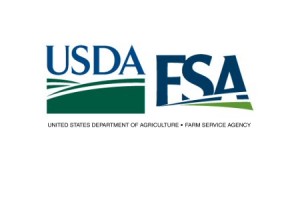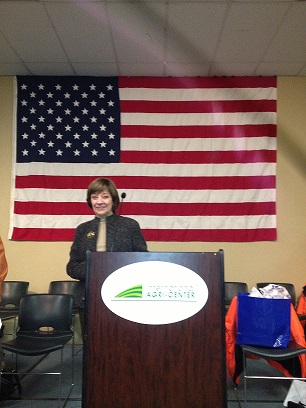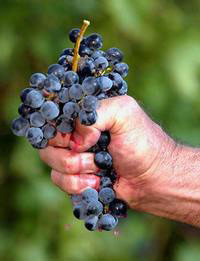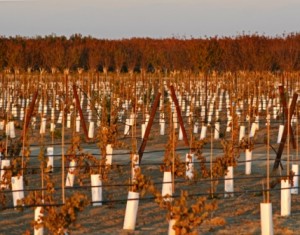
Siblings Todd and Karrie Rufer, college grads who grew up playing in the family’s agricultural warehouses in Williams, have come home to take jobs that will determine whether they will eventually assume the reins at Morning Star Co., the global tomato-processing business started by their father. (From the Sacramento Bee)
By Claudia Buck
It’s a love for the land that sinks as deep as a taproot. Or not.
For agricultural families, whether it’s a pear orchard, a wine vineyard or a tomato-processing plant, there’s no handbook for knowing when – or how – to hand over the business to the next generation. Or even whether the kids are interested.
Karrie and Todd Rufer, both college graduates in their 20s, are decidedly interested. As siblings who grew up playing in the family’s agricultural warehouses in Williams, the two have come home to take jobs that will determine whether they will eventually assume the reins at Morning Star Co., the global tomato-processing business started by their father more than 40 years ago.
“We came to work with an open mind. My dad’s put in thousands of hours, so it’s his choice to sell it or not,” said Karrie, 28, who holds a marketing MBA degree from St. Mary’s and works at the company’s Capitol Mall office in Sacramento.
Their dad, Chris Rufer, got his start in the 1970s, hauling bulk tomatoes to local canneries during his college summers. Today, he oversees a $350 million tomato-processing empire with 400 full-time employees and three Central Valley manufacturing sites that ship tomatoes – mostly diced and paste – to hundreds of U.S. companies, as well as more than 40 countries overseas.
While “emotionally invested” in his children and family, the 64-year-old business owner says it’s not a given they will – or even should – take over Morning Star. “My first responsibility is to my customers, suppliers, employees and colleagues. I don’t have my ego in this. You have to ensure that you’re passing on a business to someone who is capable, responsible and willing.”
Successfully transitioning a family-owned business is no easy task. But there’s a lot at stake, particularly for agricultural enterprises.
According to a 2013 survey by the U.S. Department of Agriculture, there is more than $2.7 trillion equity in American farms and ranches. And with the average age of U.S. farm owners nearing 60, there will be a huge turnover in ownership over the next couple decades.
“Families have different philosophies,” said Sacramento attorney Stephen Meyer, co-chair of the Downey Brand law firm’s food and agriculture practice. “Some say the farm should stay in the family, come hell or high water. Others see a need to give the next generation the flexibility to be bought out. There’s nothing wrong with either scenario.”
But there’s a real risk in not doing anything. A hard-earned family business can quickly sink if there’s no clear idea on what the founders wanted or who might be interested in carrying on the business. Meyer said he knows of a Southern California farming family where the well-to-do patriarch didn’t want to consult with anyone about who would succeed him. When he died, ownership struggles ensued among his four children. “About $2 million in attorneys’ fees later, his son owns the farm. Two of his sisters won’t speak to him. There are no good family get-togethers,” Meyer said.
Avoiding that scenario starts with a conversation, say farm-family-succession experts.
“The biggest hurdle is they don’t talk. That’s plain and simple,” said Kevin Spafford, who runs The Legacy Project, a consulting firm specializing in farm-family succession, based in Chico. “The arguments start either in the funeral home or the attorney’s office and go downhill from there. It’s usually over a misunderstanding or a perception that is not reality,” said Spafford, who conducts family workshops across the country.
He suggests starting with a family meeting, ideally in a neutral location, with a set time and a specific agenda. There can be discussions around imparting important family values and love for the land, how to structure a business so that the next generation can successfully manage together; what skills and traits should be required, such as a college education, technology skills, work experience outside the family business.
“When you have led a business for your adult lifetime, the process of delegating responsibility to a younger person is challenging … If the patriarch or older generation is unable or unwilling to delegate, for instance, it can be just as crippling as the younger generation lacking the interest or aptitude to assume responsibility,” said Mark Burrell, a Gold River-based managing partner of WestMark Group, a consulting firm specializing in agriculture issues.
Of course, keeping a business within the family is no guarantee of success. According to the Boston-based Family Firm Institute, which does research on all family-owned businesses, not just agricultural, roughly 30 percent of family businesses survive into the second generation; 12 percent are viable into the third generation; and just 3 percent operate at the fourth generation or beyond.
That means Steve Heringer and his family’s Heringer Estates Vineyards & Winery are exceedingly rare. A fifth-generation Clarksburg farmer, he knows the challenges of sustaining an ag business that started with his great-great-grandfather in 1868.
About a year ago, he and his brother – who farmed pears, asparagus and wine grapes together for more than 20 years – split their business in half.
“We separated our businesses so we can provide succession plans for our families,” Heringer said. “As much as possible, I want to ensure the heritage of the farm in the Delta in perpetuity. Each successive generation, if they choose to do something else, that’s their right. But since I had two boys who are interested in continuing, I needed to let them take charge.”
Today, his three children actively run Heringer Estates, which owns and leases about 200 acres of wine grapes and bottles about 24 varietals, including Chardonnay, petite sirah and tempranillo. Heringer’s son Stephen IV, 39, is operations manager; daughter, Stacy Heringer-McElfish, 36, is the wine club manager; and son Mike, 33, a Fresno State University viticulture graduate, is the resident winemaker.
For their father, it’s deeply satisfying. With nine grandkids, he jokes, “the seventh generation is already in the cradle.”
Last year, the Downey Brand law firm and the WestMark Group hosted a series of workshops in Sacramento for agriculture families on how to prepare for succession. Among the participants were sisters Kathryn and Rose Beltrami, who came to “get some ideas for succession,” such as a possible agricultural conservation easement. The sisters, along with four cousins, share ownership of the wheat-and-tomato farm run by their father and uncle for 50 years in Yolo County. It’s currently operated by a farm manager.
“The family farm is really important to us,” said Kathryn Beltrami, a former teacher who lives in Sacramento. “It makes me sad to see beautiful farmland turned into a subdivision. But being able to hang onto it is hard.”
Development pressures, water issues and financial concerns make it a challenge going forward. When the family’s fourth generation inherits the land, there will be 12 cousins juggling ownership decisions.
“When our dad was alive, he never thought it would change and he never thought about (succession),” she said. “But now that he’s gone, that’s all we can think about.”
Some of the stickiest issues involve families where some children work the business, but others have separate careers of their own. In those cases, there needs to be an equitable – but not necessarily equal – division of assets between “active and non-active” siblings. One option is splitting the land ownership from the farming operation itself. The active child assumes day-to-day management of the farm, while everyone together shares ownership in the land, typically the most valuable asset. The farmer leases the land, generating revenue for the non-farming siblings. Ideally, a buy-sell agreement is set up with terms and timetables enabling the farming sibling to purchase the shares of those who want to cash out.
At Morning Star Co., the Rufer siblings have no illusions about the challenge of following in their father’s footsteps. “His shoes are size 72, as far as I’m concerned,” said Todd, 25, who has an economics degree from Loyola Marymount University.
Karrie, who’s kept a “Tomato Princess” license plate holder on her car since she was 16, says it wasn’t inevitable that they would get involved. “My dad actually tried to talk me out of it at one point. But if he thought we couldn’t or didn’t want to be here, he wouldn’t have let us start.”
URL for story – http://www.sacbee.com/2014/02/02/6119638/family-farms-how-to-pass-on-or.html
 USDA News Release
USDA News Release













